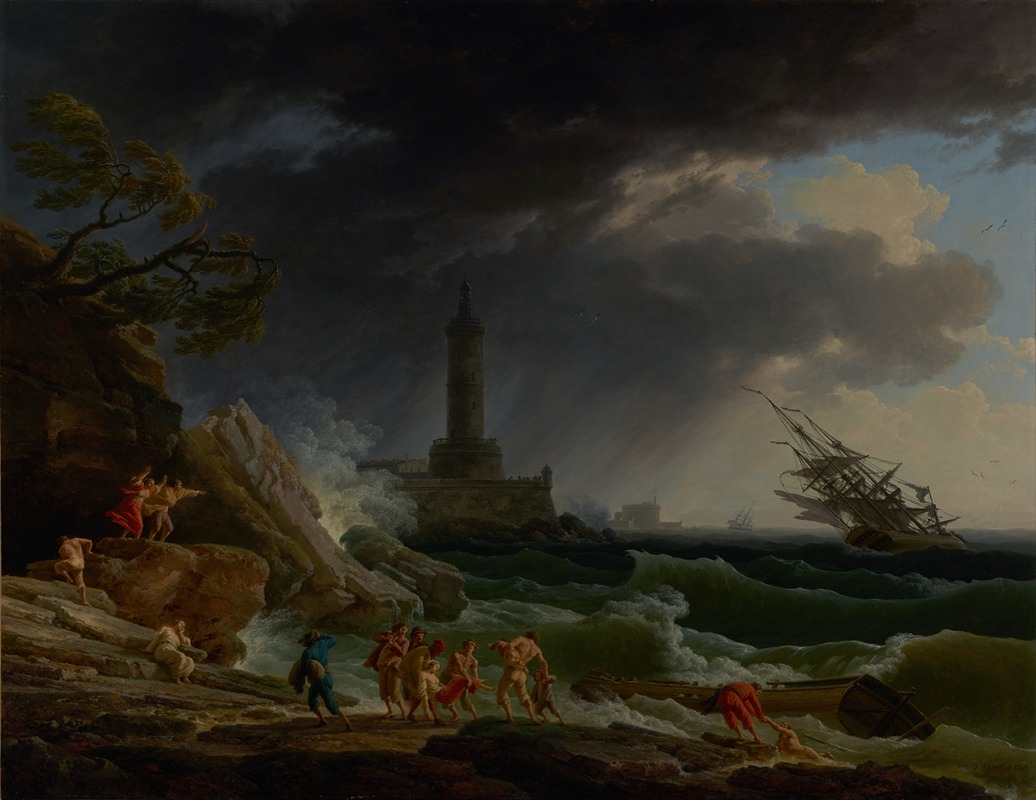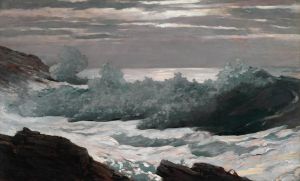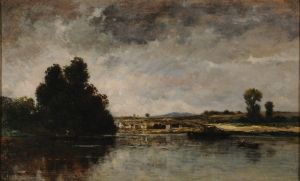
A Storm on a Mediterranean Coast
A hand-painted replica of Claude-Joseph Vernet’s masterpiece A Storm on a Mediterranean Coast, meticulously crafted by professional artists to capture the true essence of the original. Each piece is created with museum-quality canvas and rare mineral pigments, carefully painted by experienced artists with delicate brushstrokes and rich, layered colors to perfectly recreate the texture of the original artwork. Unlike machine-printed reproductions, this hand-painted version brings the painting to life, infused with the artist’s emotions and skill in every stroke. Whether for personal collection or home decoration, it instantly elevates the artistic atmosphere of any space.
Claude-Joseph Vernet's A Storm on a Mediterranean Coast is an oil painting created in 1767 by the French artist, who was renowned for his dramatic seascapes and landscapes. Vernet was a prominent figure in 18th-century European art, celebrated for his ability to capture the sublime power of nature, often depicting turbulent seas, shipwrecks, and dramatic weather conditions. This painting is a quintessential example of Vernet's mastery in portraying the interplay between human activity and the overwhelming forces of nature.
The artwork depicts a stormy scene along a Mediterranean coastline, with dark, swirling clouds dominating the sky and waves crashing violently against the shore. In the foreground, figures are shown in various states of action and distress, attempting to rescue shipwrecked sailors or salvage goods from the wreckage. The composition is dynamic, with a strong sense of movement and tension, as the figures struggle against the chaos of the natural elements. Vernet's use of light and shadow heightens the drama, with flashes of lightning illuminating parts of the scene, creating a stark contrast between the darkened sky and the illuminated figures and waves.
This painting is part of a series of works Vernet created during his career that focused on maritime themes. His seascapes were highly sought after by collectors and patrons, including members of the French aristocracy and royalty. Vernet's ability to combine meticulous detail with a sense of grandeur and emotion made his works particularly appealing during the Rococo and early Neoclassical periods. His paintings often served as both artistic achievements and records of the natural world, reflecting the Enlightenment-era fascination with nature and its forces.
A Storm on a Mediterranean Coast is housed in the Louvre Museum in Paris, where it continues to be admired for its technical brilliance and emotional impact. The painting exemplifies Vernet's skill in capturing the sublime—a concept that evokes awe and terror in the face of nature's power. It also reflects the 18th-century artistic interest in depicting humanity's vulnerability and resilience when confronted with the uncontrollable forces of the natural world.
Vernet's work remains influential, and his seascapes are considered some of the finest examples of maritime art in European history. His ability to convey both the beauty and the ferocity of the sea has ensured his lasting reputation as one of the great painters of his time.

















